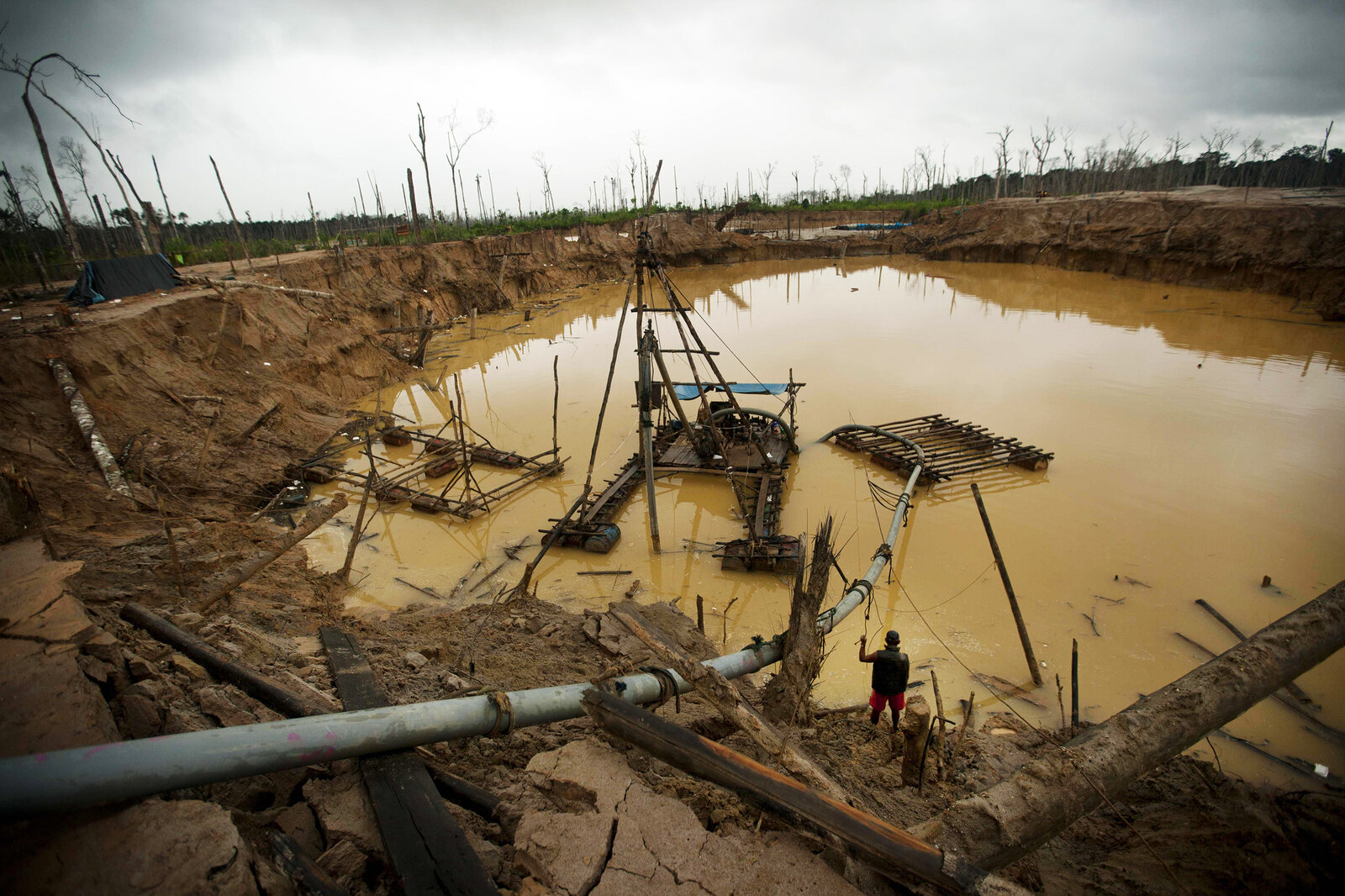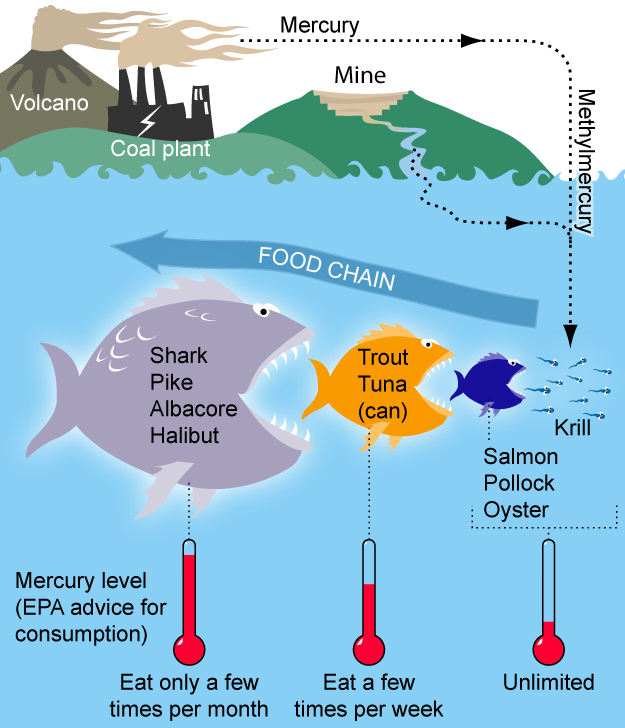When the Incan Empire was discovered by Francisco Pizarro, there had already been a history of mining and that mining history would continue into the creation of the Peruvian sate, all the way to today. As mining stayed constant, specifically gold mining, the methods and scale of the mining operations would always be adapting. Pre-colonial mining was not large scale and cared for the environment which then evolved after colonization occurred in the 1520’s. After colonization, there was no respect for the land and the only desire was extracting as much gold as possible to accumulate the most wealth possible. To extract the most gold possible, many bad techniques were used which were and are detrimental to the environment and peoples health. The following works show the role mercury played in Peruvian gold mining in effecting the environment and the health miners and citizens from colonial and modern day Peru.
Mercury in Gold Mining in Pre-Colonial and Colonial Peru
Peru has a long history of gold mining dating back to the Incan empire. Gold mining for the Incans, during the pre-colonial period, was small scale and they were conscientious about the land they were mining. Gold was meant for creating art and decorations as a rare commodity with monetary value and uses. This was due to the fact that farming and foods importance outweighed the significance of gold for the Incans, until the conquistadors arrived and demanded gold as tribute. This demand increased during the colonial period as the Spaniards desire for wealth grew. The increased demand and oppression from the Spaniards forced the natives to work the Spanish mines which grew in size from the Incan times. The new mining processes brought on harsh working conditions for the natives and a detrimental impact to the environment. One of the worst stages in the mining process for miner’s own health and the health of the environment was process of mercury amalgamation to increase the output of gold. The use of mercury gold mines in Pre-Colonial and Colonial Peruvian was terrible for the health of the miners and the local ecosystem, however it was great for business.
The mercury amalgamation process was introduced to the great silver mine of Potosí around the 1570s to make the refining process of silver more efficient. (Robins, Hagen 628) This breakthrough in the refining process is found in Peru and all over Latin America. Mercury was such an obvious choice to use in gold mining there was a local source in Huancavelica, Peru which would later be known as ‘The Mine of Death’ (Morton). It was known by this name since miners would be working with toxic liquid mercury and cinnabar, a red mercury sulfide ore, which, “led to a ‘cough and a certain illness . . . called the illness of Huancavelica’ (Sala Catala 1987)” (Robins, Hagen 628). The abundance of liquid mercury and cinnabar extracted from Huancavelica was added in the gold refining process to separate the gold from other sediments. Miners would have to add equal amounts of mercury to the amount of gold in order for the mercury and gold to amalgamate. So, however much gold was extracted from a mine, an equal amount of mercury would be put into the environment after the roasting process. Roasting was when one heated the mercury and gold in order to separate the two minerals.

Adding liquid mercury to gold forms a mercury and gold amalgam. The amalgam is created when gold dissolves into the mercury which separates the valuable mineral from the sediments around it. To obtain the gold from the amalgam it is heated, usually through an open flame or a roasting oven which does not catch the fumes created. The mercury evaporates as it gets heated leaving behind gold but releasing toxic fumes into the atmosphere. Through this process, the men and women working the mines inhale the mercury vapor which causes, “effects such as nausea, vomiting, and severe abdominal pain. The major effect from chronic exposure to inorganic mercury is kidney damage.” (EPA Mercury Compounds 1). However, around only one third of the mercury pollution is released as vapor into the air, the other two thirds are released into the local ecosystem (Sieber, Brian). The mercury released into the environment is increasingly dangerous since it is not degradable in nature. It will accumulate in plants and animals, spreading to more people beyond the miners because, people will eat the fish, plants, and animals containing mercury.

The use of cinnabar in the gold mining process was called the ‘patio’ process. The gold was amalgamated by people and animals crushing the ore with their feet (Dore 15). The extra mercury was just washed away with the other tailings from mining and since most gold deposits are found near rivers, the tailings and mercury would end up in local water ways. Dore writes, “Soils were so affected by contaminated river water even far from the mines that the plants they supported mutated over time.” (15) this shows the extent of the effect mercury could make on an ecosystem. Since mercury pollution was not just concentrated around mine sites, mercury poisoning became more common and found far from mines. All the ecosystems the river went through downstream from the mine would be able to feel the effects of the gold mine using mercury.

Mercury, when it moves through water, becomes even more toxic to human and animal health. The mercury will become methyl mercury after it has moved through the bacteria and algae in the water, then will go farther up the food chain (Sieber, Brian). As the methyl mercury travels from the algae, to the fish who eat the algae, then to the people who eat the fish, the levels of methyl mercury become even more concentrated and toxic. The of consuming methyl mercury are neurological damage, autoimmune disorders and birth defects to newborns since the methyl mercury bonds to proteins in the body (EPA Mercury Compound 3). Large enough quantities of mercury poising of any kind can kill but the amount of mercury to kill a person depends on the persons size, age, and fitness. From a study done in January of 2000 the Environmental Protection Agency claims the minimum lethal dose of mercury for a seventy-kilogram person ranges from twenty to sixty milligrams of mercury per kilogram. Since, the amalgamation process needs about equal parts mercury to gold, if a miner were complete the amalgamation process for twenty-kilograms of gold in their lifetime, it would be enough to kill them. However, this much gold is usually never found by a single person, but there would be serious side effects from mercury poisoning with much smaller quantities of mercury.
The negative effects of the amounts of mercury being used to mine gold are seen all through the people who mined gold and the ecosystems surrounding the mines. One thing that is looked at less closely is the effect the mercury amalgamation process had on the profits for mine owners. Gold mining was originally done in alluvial soils, which are loose sedimentary soils that are formed and eroded by running water. In this type of soil in the pre-colonial ere, it was easy to see and find large chunks or flakes of gold. These types of gold deposits were isolated and quickly dried up as the Spaniards arrived. When Spaniards and independent mining companies arrived, the mercury amalgamation process allowed mines to work gold deposits with much finer gold flakes and chunks or land that was less rich in gold. Today, a rich gold mine will contain a few tenths of an ounce of gold per ton of ore. (Ro)
Since mercury was not used for much other than mining it was cheap and readily available. Mine owners would save countless hours of workers sifting through soil to only extract very little gold, but mercury allowed large amounts of soil and mercury to be mixed together to extract the most gold possible. The mercury amalgamation process saved time which saved money by cutting labor costs. Mine owners capitalized by using mercury by cutting costs and even cutting down the amount of gold missed.
The effects mercury had on miners was detrimental to their health not only from working with the toxic mineral, but from how the runoff in the environment effected the wildlife, ecosystems, and health of communities. Mercury had caused plants to mutate changing the ecosystem. Many people and their children became very sick and form birth defects from working the mines and using mercury. At the cost of communities’ health and the environment, the mercury amalgamation process increased efficiency and profits of mine owners in Peru in the colonial period.
Works Cited
“Artisanal and Small-Scale Gold Mining Without Mercury.” EPA, Environmental Protection Agency, 1 May 2017, www.epa.gov/international-cooperation/artisanal-and-small-scale-gold-mining-without-mercury.
Dore, Elizabeth. “Open Wounds.” Report on the Americas, vol. 25, no. 2, 1991, pp. 14–20., doi:10.1080/10714839.1991.11723147.
“Mercury Compounds.” EPA, Environmental Protection Agency,Jan. 2000, www.epa.gov/sites/production/files/2016-09/documents/mercury-compounds.pdf+.
Morton, Mary Caperton. “The Long Legacy of Peru’s ‘Mine of Death.’” EARTH Magazine, 4 Mar. 2014, www.earthmagazine.org/article/long-legacy-perus-mine-death.
Ro, Sam. “Here’s How Many Tons Of Rock You Have To Mine Just For An Ounce Of Gold.” Business Insider, Business Insider, 24 Apr. 2013, www.businessinsider.com/tons-of-rock-for-an-ounce-of-gold-2013-4.
Robins, Nicholas A., and Nicole A. Hagan. “Mercury Production and Use in Colonial Andean Silver Production: Emissions and Health Implications.” Environmental Health Perspectives, National Institute of Environmental Health Sciences, May 2012, www.ncbi.nlm.nih.gov/pmc/articles/PMC3346781/.
Sieber, Nancy Long, and Joseph Brian. “Health Impact of Artisanal Gold Mining in Latin America.” ReVista, revista.drclas.harvard.edu/book/health-impact-artisanal-gold-mining-latin-america.
The infographic above depicts the dangers of working with mercury in the gold extraction process. The effects of mercury pollution are also noticeable far from the mines. Many miners just let excess mercury run off into the local waterways with little regard for how it will effect the ecosystem. The video below goes into more depth on the extraction of gold using mercury and its effects.
Here is a link to a article on Gold Mining in Madre de Dios Peru: Small-Scale Peruvian Gold Mining in Madre de Dios
 BIO: My name is Teddy Smith and I am from Fair Haven New Jersey. I am a sophomore on the varsity swim team majoring in sociology and minoring in economics at Lehigh University.
BIO: My name is Teddy Smith and I am from Fair Haven New Jersey. I am a sophomore on the varsity swim team majoring in sociology and minoring in economics at Lehigh University.
